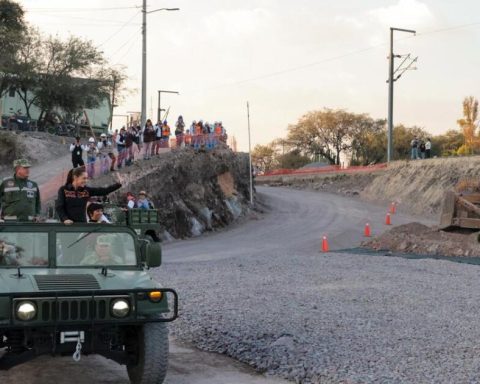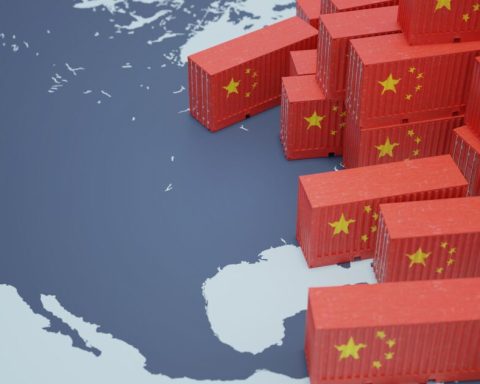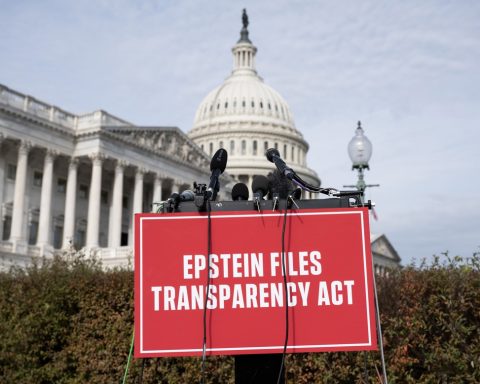AND
On December 11, 2006, Just a few days after assuming the Presidency of Mexico, Felipe Calderón would launch the Michoacán Joint Operation, in which the Ministries of the Interior, Public Security – under the command of Genaro García Luna -, National Defense and the federal, state and municipal security corporations. It was not the beginning of the militarization of public security nor the first time that the Army participated in tasks against drug trafficking, but it would be the beginning of a new security strategy, of warfare, of open warfare. A strategy that, a few days before, Calderón himself had defined in front of Felipe de Borbón and Mexican and Spanish businessmen: We are working hard to win the war on crime
.
Calderón was trying to win with the war the legitimacy that he had not won at the polls. In order to try to leave behind the electoral fraud with which he was imposed in the Presidency, he built a narrative of an indispensable, brave man, willing to face the great threat
of the nation
It was no coincidence that Michoacán was the state chosen as a laboratory for the war policy that would later spread throughout the country: Calderón is originally from that state, so he chose his homeland for the start of his war adventure. It is also true that that entity was experiencing a wave of violence due to the expansion and confrontation of criminal corporations, but it was not the only one. Tamaulipas was experiencing a similar and even more violent climate, which is why Vicente Fox had implemented the Safe Mexico Operation a year ago.
It should also be noted that, in 2006, Michoacán was experiencing growing processes of popular organization. The strike of the workers of the Siderúrgica Lázaro Cárdenas Las Truchas (Sicartsa), which was violently repressed, is a good example of this.
That state, with a strong tradition of indigenous, peasant, popular and teacher organization, and which was also for many years a stronghold of Cardenismo, was turned into a war theater in which municipal, state and federal security corporations synergized with corporations criminal and other types, such as mining, to unleash a war for resources, territory and against peoples and society. The accumulation of capital in its clearest form.
In response to this scenario, different sectors organized their own forces to guarantee their security. In a short time, desperation led thousands of communities to create self-defense groups, some of which would later be co-opted by the State and by organized crime.
A different case is that of the guards, police or community rounds, which belong to indigenous peoples, with a long history and which on their horizon is not only the urgency of security, but a different model of life, societal projects in which the Security also involves rethinking justice, education, food, health, self-government. Holistic systems that emerge as alternative civilizing models against the barbarism of capitalism and its criminal corporations. Among these last examples, the experience –not the only one– of the Community Guard of Santa María Ostula stands out.
Since 2009, the Nahua community of Santa María Ostula intensified its resistance and began a process of land recovery. Articulated with other original and mestizo peoples in the region, Ostula became a node that managed to link many other struggles. Much of this process was reflected in the Ostula Manifesto in June 2009.
The response was not long in coming and this complex mix between the State, organized crime and extractive companies –particularly the Ternium mining company– intensified the war in the region, which left a balance between 2009 and 2014 of 34 people murdered and six forced disappearances. of the commoners. At the same time, cartels, mining companies and political parties, together and separately, advanced with fragmentation dynamics and community confrontation.
On January 12, 2023, three members of the Community Guard of Santa María Ostula and also of the Community Guard of the Municipality of Aquila were murdered. In their statement, the Nahua indigenous people of Santa María Ostula declared that the crime was perpetrated “by a command of approximately 20 hitmen from the Jalisco Cartel New generation ( CJNG)”. Three days after these attacks, on Sunday, January 15, the community organizer from the municipality of Aquila, Antonio Díaz, and Ricardo Lagunes, who was legally accompanying the same community, were disappeared. Once again the pattern is repeated: mining, organized crime and the State attacking and allowing the attack against the community, contributing to the fragmentation and rupture of the community fabric. The violence throughout Mexico must stop now.
* Sociologist
Twitter: @RaulRomero_mx















